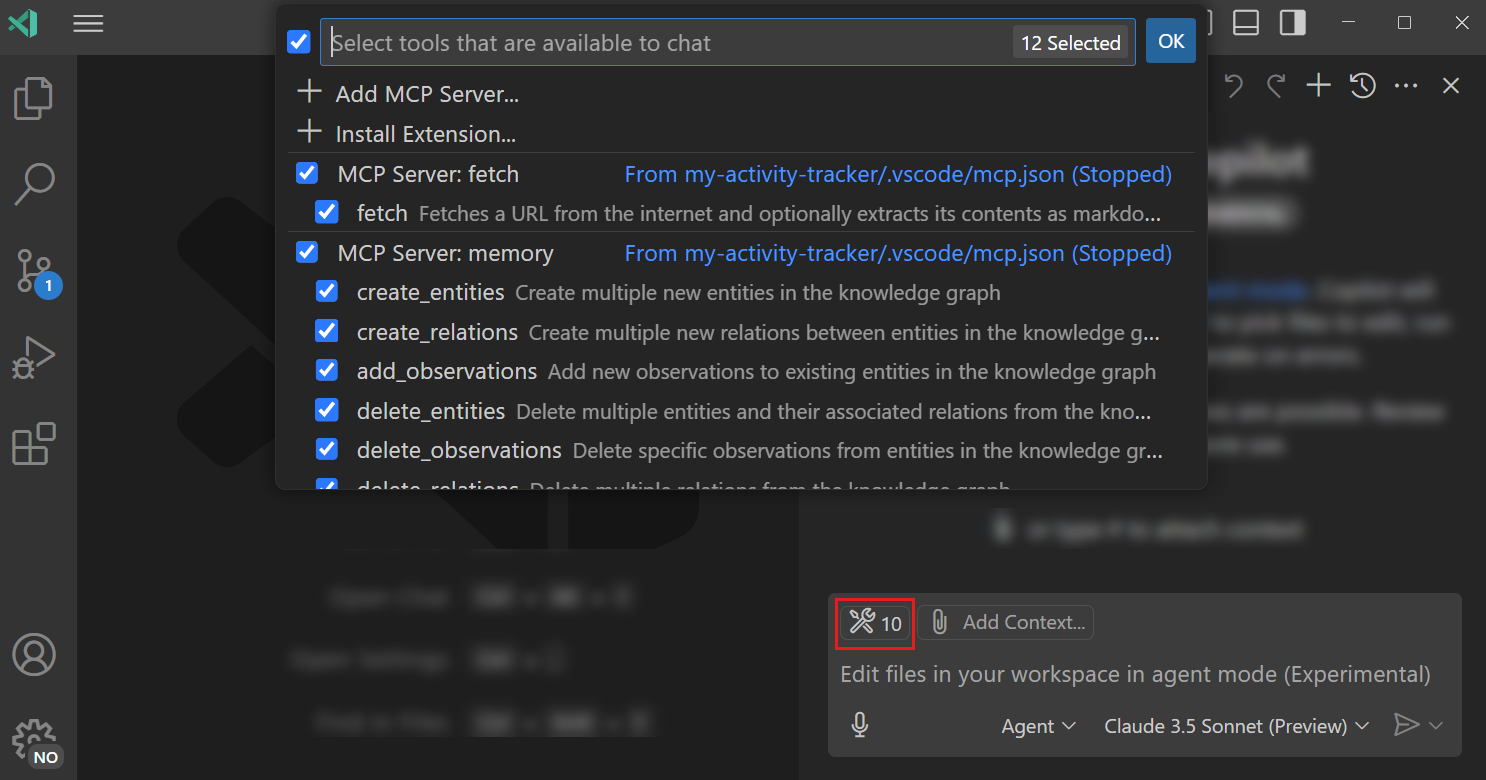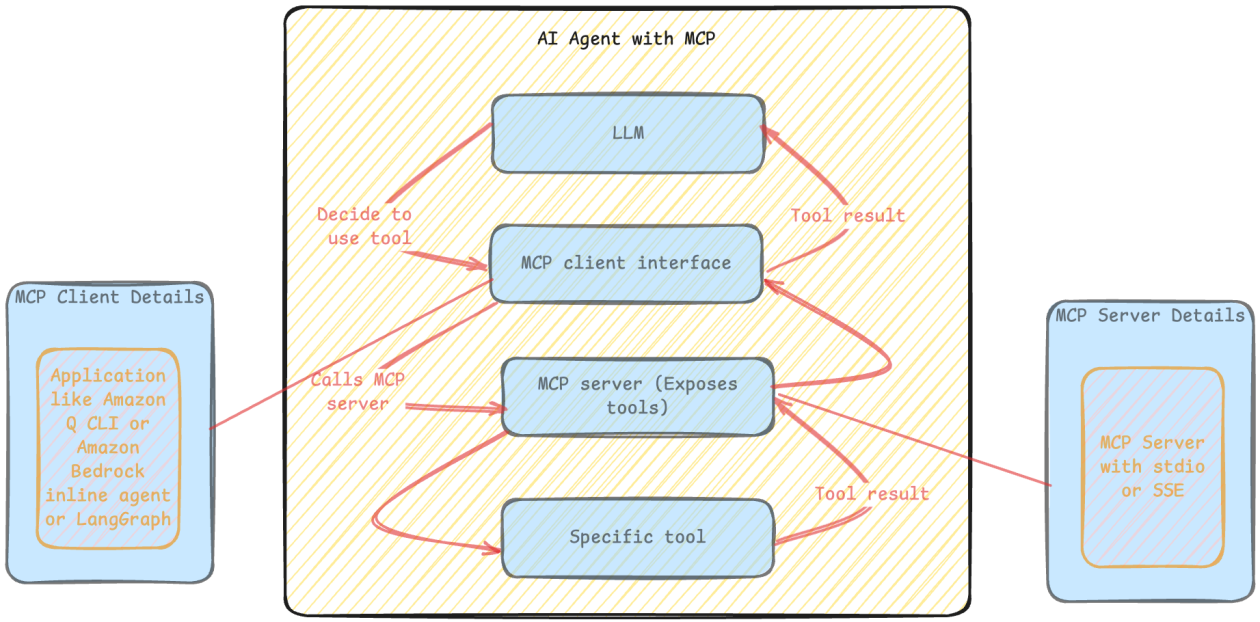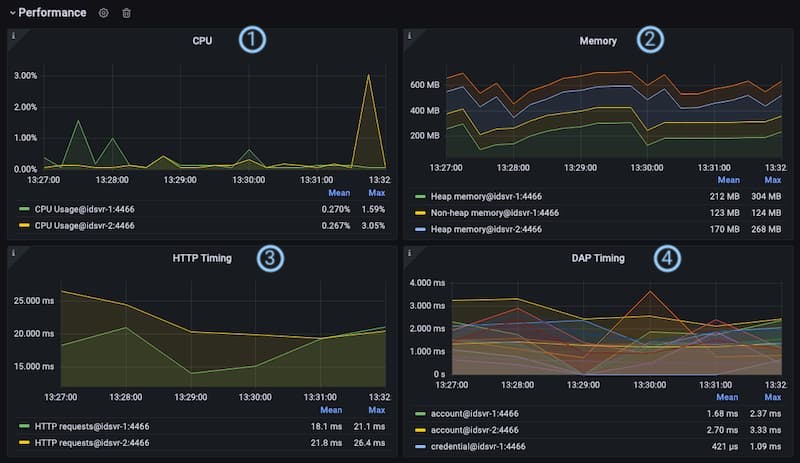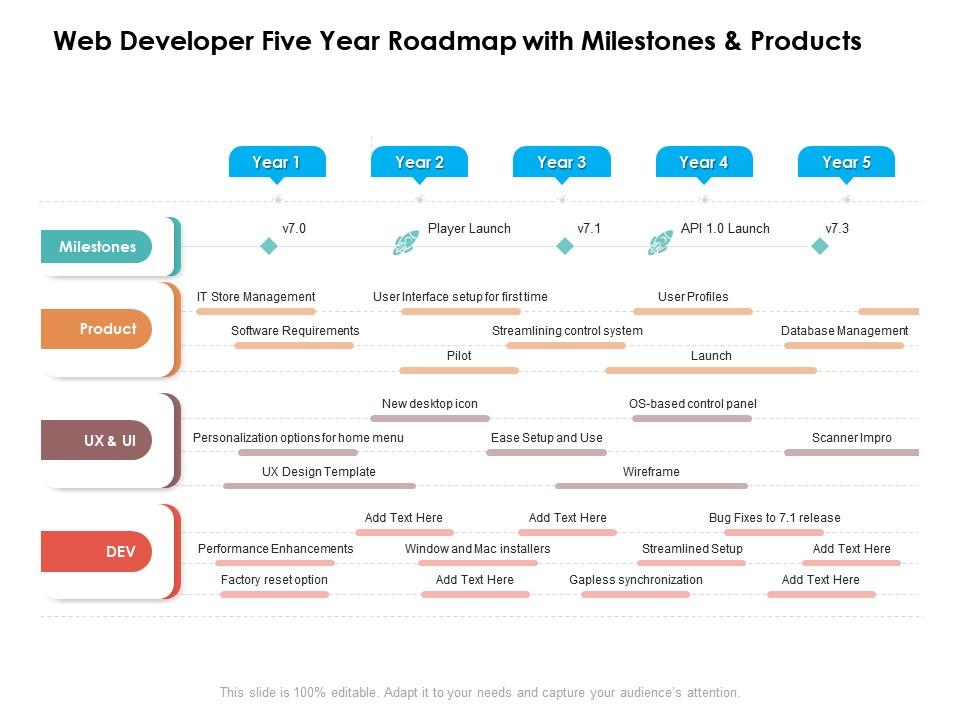Understanding GitHub MCP: A Developer's Guide to Model Context Protocol Integration
Explore how Model Context Protocol transforms AI integration with GitHub and enhances developer workflows
Introduction to Model Context Protocol (MCP) on GitHub
I've been exploring the Model Context Protocol (MCP) ecosystem recently, and I'm excited to share my insights about this transformative technology. MCP represents a significant advancement in how AI models interact with external tools and data sources, particularly within the GitHub environment.
At its core, MCP is an open protocol that standardizes how AI applications connect to external resources. This creates a seamless bridge between language models and the tools developers use daily, enabling more powerful, context-aware AI assistants.

GitHub's Official MCP Server
GitHub has released an official MCP Server that provides direct integration with GitHub APIs. This server enables AI assistants to access repository data, issues, pull requests, and other GitHub resources without requiring manual context switching or copy-pasting by developers.
Key Benefits for Developers
- Enhanced context awareness for AI coding assistants like GitHub Copilot
- Streamlined access to GitHub repositories and related data
- Reduced context switching between tools and interfaces
- More intelligent suggestions based on repository-specific context
- Improved automation capabilities for GitHub workflows
MCP Adoption Growth
The following chart shows the increasing adoption of MCP across different development environments:
My experience with MCP has shown me that it represents a fundamental shift in how we interact with AI tools in development workflows. By providing structured access to GitHub resources, MCP enables more intelligent, contextually aware AI assistance that feels like a natural extension of the development environment.
Core Components of GitHub MCP Server
When I first started working with the GitHub MCP Server, I needed to understand its architecture and components to effectively leverage its capabilities. Let me walk you through what I've learned about how it's structured and how to get started.
GitHub MCP Server Architecture
Below is a visualization of the core architectural components:
flowchart TD
A[AI Application] -->|MCP Protocol| B[GitHub MCP Server]
B -->|API Calls| C[GitHub API]
subgraph "GitHub MCP Server"
D[Authentication Module]
E[Request Handler]
F[Response Formatter]
G[Rate Limiter]
D --> E
E --> F
G -.-> E
end
B --> D
C --> F
Essential Prerequisites
Before setting up the GitHub MCP Server, you'll need to ensure you have:
- An MCP-compatible host application (like VS Code with GitHub Copilot)
- A GitHub account with appropriate permissions
- A GitHub Personal Access Token (PAT) with the necessary scopes
- Docker installed (for container-based deployment)
Authentication Setup
Setting up authentication is a critical step in configuring the GitHub MCP Server. You'll need to create a GitHub Personal Access Token with the appropriate scopes to allow the server to access GitHub resources on your behalf.
GitHub PAT Configuration
When creating your Personal Access Token, ensure you include these scopes:
repo- For full repository accessread:org- For organization informationread:user- For user profile informationread:project- For project board access
Deployment Options
I've found that there are two main approaches to deploying the GitHub MCP Server:
Remote Server
Hosted by GitHub, this is the easiest method to get started. Simply configure your MCP host to connect to the remote server endpoint.
Ideal for: Quick setup, minimal configuration
Local Server
Run the GitHub MCP Server locally using Docker. This gives you more control over the server configuration and data flow.
Ideal for: Enhanced privacy, custom configurations
Docker-based Implementation
For local deployment, I typically use Docker to run the GitHub MCP Server. Here's a basic example of the configuration:
docker run -i --rm -e GITHUB_PERSONAL_ACCESS_TOKEN="your_pat_here" \ ghcr.io/github/github-mcp-server
This command pulls the official GitHub MCP Server image from GitHub Container Registry and runs it with your PAT as an environment variable.

Working with the GitHub MCP Server has taught me that proper setup of the core components is essential for a smooth experience. Taking time to understand the architecture and authentication requirements helps avoid common pitfalls and ensures secure integration with your AI tools.
MCP Integration with Development Environments
Integrating MCP with your development environment is where the real magic happens. I've found that VS Code offers one of the most seamless integration experiences, especially when combined with GitHub Copilot.
VS Code Setup
Setting up MCP in VS Code requires a few configuration steps to connect your editor with the GitHub MCP Server.
MCP Integration Flow
The diagram below illustrates how VS Code connects with MCP servers:
sequenceDiagram
participant VSCode as VS Code
participant Copilot as GitHub Copilot
participant MCP as MCP Host
participant GitHub as GitHub MCP Server
VSCode->>Copilot: Initialize
Copilot->>MCP: Register MCP capabilities
MCP->>GitHub: Connect (with PAT)
GitHub-->>MCP: Connection confirmed
Note over VSCode,GitHub: Setup complete
VSCode->>Copilot: User query
Copilot->>MCP: Request context
MCP->>GitHub: Fetch repository data
GitHub-->>MCP: Return data
MCP-->>Copilot: Provide context
Copilot-->>VSCode: Enhanced response
Step-by-Step Configuration
I've broken down the process of setting up MCP with VS Code into these manageable steps:
-
Install Required Extensions
Ensure you have the latest version of GitHub Copilot and any MCP-related extensions installed.
-
Create MCP Configuration File
Create a
.mcp.jsonfile in your workspace or user directory with your server configuration. -
Configure GitHub MCP Server
Add the GitHub MCP Server configuration to your
.mcp.jsonfile. -
Set Environment Variables
Configure your GitHub PAT as an environment variable for secure access.
-
Restart VS Code
Restart your editor to apply the new MCP configuration.
Example .mcp.json configuration:
{
"mcpServers": {
"github": {
"command": "npx",
"args": ["-y", "@modelcontextprotocol/server-github"],
"env": {
"GITHUB_PERSONAL_ACCESS_TOKEN": "${env:GITHUB_PAT}"
}
}
}
}
Enhancing GitHub Copilot with MCP
Once properly configured, GitHub Copilot gains the ability to access repository context through the MCP connection. I've found this creates a significantly more intelligent coding assistant that can:
- Reference specific files in your repository when suggesting code
- Understand project structure and dependencies
- Provide more contextually relevant code completions
- Access GitHub issues and pull requests for context-aware suggestions
Troubleshooting Common Issues
During my implementation, I encountered several common integration challenges:
| Issue | Possible Cause | Solution |
|---|---|---|
| Connection Refused | MCP Server not running | Verify Docker container is active |
| Authentication Failed | Invalid or expired PAT | Generate a new PAT with correct scopes |
| Server Not Recognized | Incorrect configuration | Verify .mcp.json syntax and structure |
| Rate Limiting | Too many API requests | Implement caching or increase limits |
Visualizing MCP Components
When troubleshooting complex MCP integrations, I've found that MCP architecture blueprint tools from PageOn.ai help me visualize the connections between components and identify potential issues more quickly.

My experience integrating MCP with VS Code has transformed how I interact with GitHub Copilot. The additional context awareness makes the AI assistant feel much more like a knowledgeable team member who understands my project's specific details and requirements.
Practical Applications & Use Cases
After setting up GitHub MCP, I discovered numerous practical applications that significantly enhanced my development workflow. Let me share some of the most impactful use cases I've implemented.
Automating GitHub Workflows
One of the most powerful applications I've found is using MCP-enabled AI assistants to automate common GitHub tasks:
- Automatically generating PR descriptions based on commit history
- Creating issue templates with contextual awareness of project structure
- Suggesting code reviewers based on file ownership and expertise
- Automating dependency updates with intelligent version selection
Workflow Efficiency Gains
Based on my team's experience, here's how MCP integration improved our development efficiency:
Code Repository Analysis
MCP enables AI assistants to perform deep analysis of code repositories, providing insights that would be time-consuming to generate manually:
Codebase Understanding
AI can analyze repository structure and dependencies to provide high-level architectural insights.
Technical Debt Identification
Identify areas of code that need refactoring based on complexity, duplication, and change frequency.
Documentation Generation
Automatically create or update documentation based on code changes and comments.
Security Vulnerability Detection
Identify potential security issues by analyzing code patterns and dependencies.
Seamless Access to GitHub Data
One of the most immediate benefits I noticed was the elimination of context switching when working with GitHub data:
Context Switching Reduction
How MCP reduces the need to switch between tools:
flowchart LR
A[Developer] -->|Without MCP| B[VS Code]
A -->|Without MCP| C[GitHub UI]
A -->|Without MCP| D[Documentation]
A -->|Without MCP| E[Issue Tracker]
A -->|With MCP| F[VS Code + MCP]
F -->|Integrated Access| C
F -->|Integrated Access| D
F -->|Integrated Access| E
style F fill:#FF8000,stroke:#FF8000,color:white
Multi-Server Integration
I've found that combining GitHub MCP Server with other MCP servers creates powerful workflows that span multiple tools:
- Linking GitHub issues with Google Drive documents for comprehensive documentation
- Connecting Slack conversations to relevant GitHub pull requests
- Integrating project management tools with code repositories
- Creating unified search across multiple knowledge bases and code repositories
Visualizing Data Flows
When working with complex multi-server setups, I use MCP server configuration dashboards from PageOn.ai to create clear visual representations of data flows between different systems.

Through practical application, I've discovered that GitHub MCP integration delivers the most value when it's used to eliminate friction points in development workflows. The ability to access GitHub data without context switching has been particularly transformative for my team's productivity.
Building Custom MCP Implementations
While the official GitHub MCP Server covers many use cases, I've found that building custom MCP implementations can address specific needs and workflows. Here's what I've learned about creating custom MCP servers.
MCP Specification Overview
Before building a custom implementation, it's essential to understand the core requirements of the MCP specification:
MCP Protocol Components
The key elements of the MCP specification:
flowchart TD
A[MCP Specification] --> B[Base Protocol]
A --> C[Client Features]
A --> D[Server Features]
B --> B1[JSON-RPC]
B --> B2[Transport Layer]
C --> C1[Request Handling]
C --> C2[Context Management]
D --> D1[Tool Registration]
D --> D2[Data Access]
D --> D3[Authentication]
style A fill:#FF8000,stroke:#FF8000,color:white
Development Languages & Frameworks
Based on my experience, several languages and frameworks work well for MCP server development:
TypeScript/JavaScript
Most popular choice with extensive libraries and examples. Ideal for web-based integrations.
Python
Excellent for data processing and scientific computing integrations. Rich ecosystem of libraries.
C#/.NET
Strong typing and performance. Good choice for Windows-centric environments.
Language Popularity for MCP Development
Based on community contributions and GitHub repositories:
Security Considerations
When building custom MCP servers, I've found these security practices to be essential:
- Token Management: Secure handling of authentication tokens, never hardcoding credentials
- Scope Limitation: Implementing principle of least privilege for API access
- Input Validation: Thorough validation of all inputs to prevent injection attacks
- Rate Limiting: Implementing appropriate rate limits to prevent abuse
- Audit Logging: Comprehensive logging of access and operations for security monitoring
Learning Resources
For developers new to MCP, I highly recommend these resources:
Microsoft's MCP for Beginners
A comprehensive curriculum covering MCP fundamentals through advanced topics with examples in multiple languages.
Available on GitHub: microsoft/mcp-for-beginners
Model Context Protocol Website
Official documentation, specification, and examples for implementing MCP servers.
modelcontextprotocol.io
Visualizing Your Architecture
When designing custom MCP servers, I use MCP implementation roadmap tools from PageOn.ai to map out the architecture and plan the development process.

Building custom MCP implementations has given me a deeper appreciation for the protocol's flexibility. While it requires more initial investment than using pre-built servers, the ability to tailor the implementation to specific workflows has provided significant long-term benefits for my team's productivity.
Advanced MCP Server Configuration
As my team's usage of GitHub MCP grew, I needed to implement more advanced configuration techniques to optimize performance and scalability. Here's what I've learned about fine-tuning MCP server deployments.
Performance Optimization
Several techniques have helped us significantly improve MCP server performance:
Response Caching
Implementing intelligent caching for frequently accessed repository data to reduce API calls.
Batch Processing
Grouping related API requests to minimize round trips and improve response times.
Connection Pooling
Maintaining persistent connections to the GitHub API to reduce connection overhead.
Selective Data Loading
Loading only essential data fields to minimize payload sizes and processing time.
Performance Impact of Optimization Techniques
Measured improvement in response times after implementing various optimizations:
Scaling Strategies
For enterprise environments, I've implemented these scaling approaches:
MCP Server Scaling Architecture
A typical enterprise scaling approach:
flowchart TD
A[Load Balancer] --> B1[MCP Server Instance 1]
A --> B2[MCP Server Instance 2]
A --> B3[MCP Server Instance 3]
B1 --> C[Redis Cache]
B2 --> C
B3 --> C
B1 --> D[GitHub API]
B2 --> D
B3 --> D
style A fill:#FF8000,stroke:#FF8000,color:white
style C fill:#42A5F5,stroke:#42A5F5,color:white
Multi-Server Orchestration
When working with multiple MCP servers, I've found these orchestration approaches to be effective:
- Federated Configuration: Centralized configuration management for all MCP servers
- Cross-Server Communication: Enabling servers to share context and data when appropriate
- Unified Authentication: Single sign-on across multiple MCP servers
- Centralized Logging: Aggregating logs from all servers for comprehensive monitoring
Interactive Configuration Dashboards
For complex MCP deployments, I've created interactive dashboards to simplify configuration and monitoring:
Configuration Visualization
To manage our enterprise MCP deployment, I use MCP server configuration dashboards from PageOn.ai, which provide interactive visual interfaces for configuring and monitoring multiple servers.

Monitoring Best Practices
For reliable MCP server operation, I implement these monitoring practices:
Health Checks
Regular automated checks to verify server availability and performance.
Metrics Collection
Gathering detailed performance metrics to identify bottlenecks and optimization opportunities.
Alerting
Proactive notifications for performance degradation or error conditions.
Usage Analytics
Tracking feature usage patterns to guide future development priorities.
Implementing advanced configuration techniques has allowed us to scale our MCP deployment to support hundreds of developers while maintaining excellent performance. The investment in proper monitoring and optimization has paid significant dividends as our usage has grown.
Community Resources & Future Developments
The MCP ecosystem is rapidly evolving, with a vibrant community contributing to its development. I've found several valuable resources and exciting future directions worth highlighting.
Active GitHub Repositories
These repositories are central to the MCP ecosystem and provide valuable resources:
github/github-mcp-server
The official GitHub MCP Server implementation with documentation and examples.
modelcontextprotocol/servers
A collection of official MCP server implementations for various services.
microsoft/mcp-for-beginners
Comprehensive learning resources for MCP development in multiple languages.
modelcontextprotocol/specification
The official MCP protocol specification and documentation.
Key Contributors
Several organizations are driving MCP development forward:
Organization Contributions to MCP Ecosystem
Based on repository contributions and protocol development:
Upcoming Features & Enhancements
Based on community discussions and roadmaps, these are some exciting developments on the horizon:
- Enhanced Security Framework: More granular permission models and improved authentication
- Cross-Server Context Sharing: Standardized methods for MCP servers to share context
- Performance Optimizations: Improved caching and reduced latency for large repositories
- Extended Tool Capabilities: Richer interaction models for AI assistants
- Enterprise Management Features: Better tools for managing MCP at scale
Contributing to the MCP Community
There are several ways to get involved and contribute to the MCP ecosystem:
Open Source Contributions
Submit pull requests to improve existing MCP servers or create new ones.
Documentation
Help improve guides, tutorials, and examples to make MCP more accessible.
Community Support
Answer questions and help others in GitHub Discussions and community forums.
Use Case Sharing
Share your implementations and use cases to inspire others.
Visualizing the Roadmap
To help our team understand where MCP is heading, I created a visual implementation roadmap using MCP implementation roadmap tools from PageOn.ai, which helps us align our development priorities with the protocol's evolution.

Being part of the MCP community has been incredibly rewarding. The collaborative spirit and rapid pace of innovation are creating exciting opportunities for developers to build more intelligent, context-aware AI assistants that seamlessly integrate with our existing tools and workflows.
Conclusion & Next Steps
Throughout this guide, I've shared my experiences implementing and working with GitHub MCP. This technology represents a significant advancement in how AI assistants interact with our development tools and resources.
Key Takeaways
- MCP provides a standardized way for AI models to access external tools and data sources
- GitHub's official MCP Server enables seamless integration with repositories, issues, and other GitHub resources
- Integration with development environments like VS Code enhances AI assistants with contextual awareness
- Custom MCP implementations can address specific workflow needs and integration requirements
- Advanced configuration techniques enable enterprise-scale deployment and optimization
- A vibrant community is driving continuous improvement and innovation in the MCP ecosystem
Recommended Starting Points
Based on your experience level, here are my recommendations for getting started with GitHub MCP:
Beginners
- Set up VS Code with GitHub Copilot and MCP
- Explore the official GitHub MCP Server
- Follow Microsoft's MCP for Beginners curriculum
Intermediate
- Create custom MCP configurations
- Integrate multiple MCP servers
- Implement basic performance optimizations
Advanced
- Build custom MCP servers
- Implement enterprise-scale deployments
- Contribute to the MCP open source ecosystem
Resources for Continued Learning
These resources will help you deepen your understanding of MCP:
- Official MCP documentation at modelcontextprotocol.io
- GitHub MCP Server repository and examples
- Microsoft's comprehensive MCP for Beginners curriculum
- Anthropic's MCP server implementations and tutorials
- Community discussions and forums on GitHub
Visualizing Complex MCP Architectures
As you build more sophisticated MCP implementations, I highly recommend using MCP architecture blueprint tools from PageOn.ai to visualize complex architectures and workflows. These tools have been invaluable in helping my team plan and communicate our MCP strategy.
MCP Implementation Journey
A visualization of the typical implementation journey:
flowchart LR
A[Basic Setup] --> B[Integration]
B --> C[Optimization]
C --> D[Custom Development]
D --> E[Enterprise Scaling]
style A fill:#FF8000,stroke:#FF8000,color:white
style E fill:#66BB6A,stroke:#66BB6A,color:white
MCP represents a fundamental shift in how AI assistants interact with our development tools and resources. By providing structured, secure access to external data and services, MCP enables more intelligent, contextually aware AI assistance that feels like a natural extension of our development environments.
I hope this guide has provided valuable insights and practical guidance for your own GitHub MCP implementation journey. As the protocol and ecosystem continue to evolve, the possibilities for enhancing our development workflows with intelligent AI assistance will only continue to expand.
Transform Your Visual Expressions with PageOn.ai
Ready to create stunning visualizations of your MCP architecture, workflows, and implementation roadmaps? PageOn.ai provides powerful tools to transform complex technical concepts into clear, engaging visual expressions.
Start Creating with PageOn.ai TodayYou Might Also Like
Building Competitive Advantage Through Effective Speaking | Business Communication Strategy
Discover how effective speaking creates measurable competitive advantage in business. Learn strategic communication frameworks, crisis response techniques, and visualization tools for organizational success.
Multi-Format Conversion Tools: Transforming Modern Workflows for Digital Productivity
Discover how multi-format conversion tools are revolutionizing digital productivity across industries. Learn about essential features, integration strategies, and future trends in format conversion technology.
Circle of Knowledge Method: Creating Credible Visual Presentations That Resonate
Learn how to implement the Circle of Knowledge Method to create credible, visually stunning presentations that build authority and connect with your audience.
Transform Raw Text Data into Compelling Charts: AI-Powered Data Visualization | PageOn.ai
Discover how AI is revolutionizing data visualization by automatically creating professional charts from raw text data. Learn best practices and real-world applications with PageOn.ai.